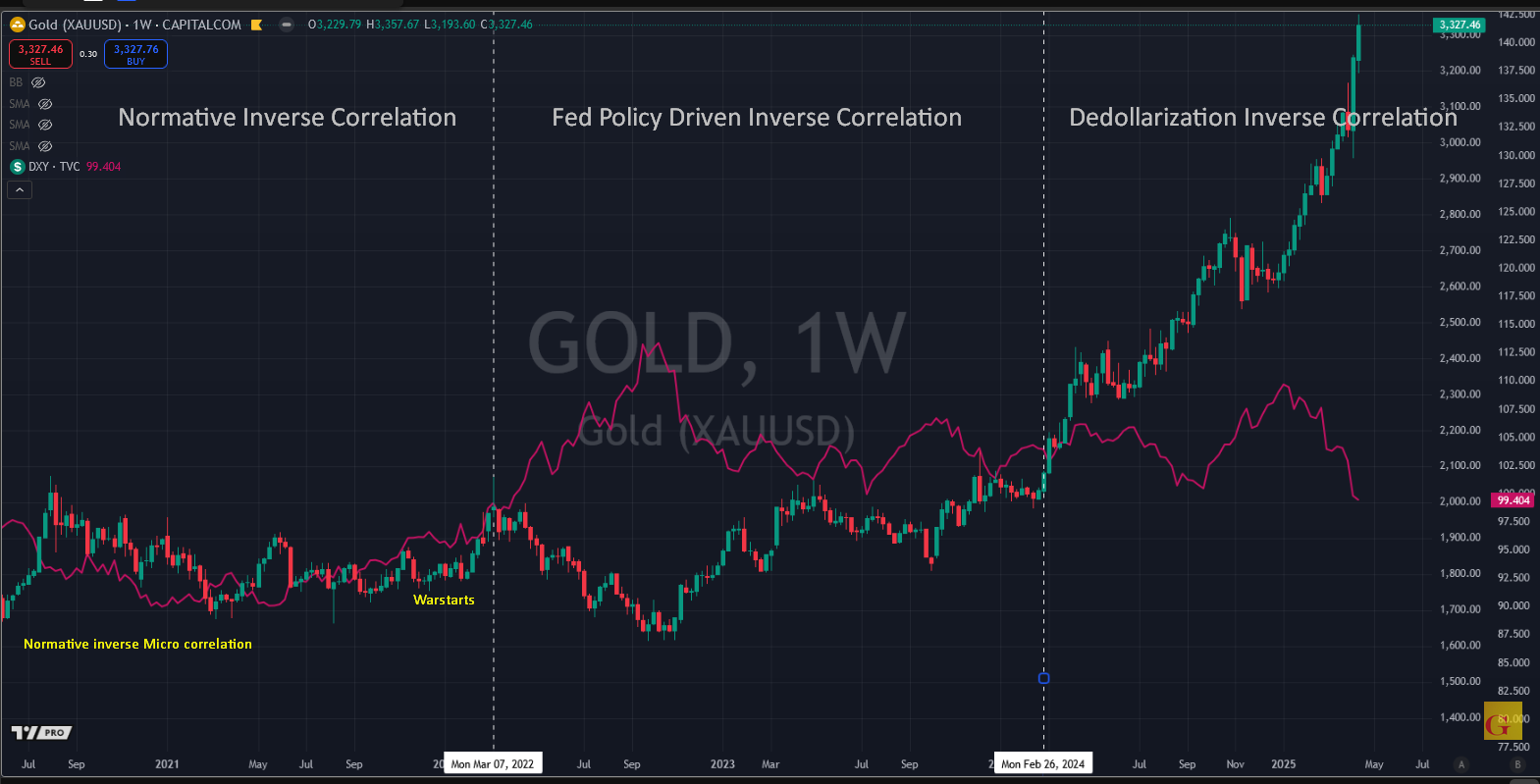The Dollar Just Lost Its Moat: Goldman predicts a 20% decline from here.
From Dollars Per Ounce to Ounces Per Dollar Again
“All financial wisdom is cyclical.”
Contents (1200 words)
Backdrop: Gold isn’t Reacting, It’s Predicting Again
The Dollar Just Lost Its Moat
Goldman Sachs Reverses Course as Tariff Fallout Accelerates
Exceptionalism, Eroded
Who Pays the Tariff?- The Currency Does
Brexit, Not Beijing
The End of Return-Led Flows?
Three Risks That Could Reverse This View
Bottom Line
Backdrop: Gold isn’t Reacting, It’s Predicting Again
Gold is no longer reacting to the dollar as it used to (spotted in this space before most and formalized here ) and has now become a predictive indicator for the dollar. Out bluntly—as gold correlations to the dollar and interest rates have collapsed, so has gold’s predictive ability has been rediscovered. 1
Historical Context:
Before the 1990s, gold was a barometer of risk. For example, during the inflation spikes of the 1980s, gold would often lead other assets in pricing-in that risk. More broadly, markets didn’t always assume the U.S. bond market was unshakable. Bonds were, at one time, viewed as an experiment—gold was the hedge in case they failed. As globalization and Neo-Keynesian thinking took hold, that relationship faded from view.
But everyone back then understood: if the U.S. bond market broke, gold was the final refuge. That truth was simply forgotten over time. A new generation is now rediscovering it.
Today, as bonds lose their appeal as safe-haven assets, gold has resumed its historical role as a leading signal. Since Covid, gold has called out several major turns: inflation was not transitory; global fiat-driven deficits are structural, not cyclical; and most critically, the post-dollar, multipolar world is no longer theoretical—it’s in motion. The Gold market has been speaking this in increasing volume since the Russo-Ukraine war started in 2022.





